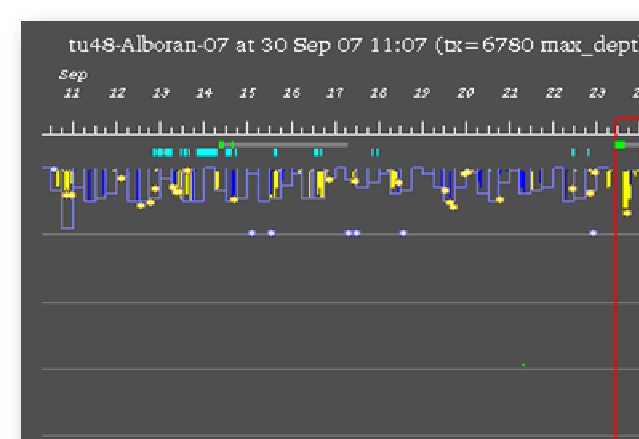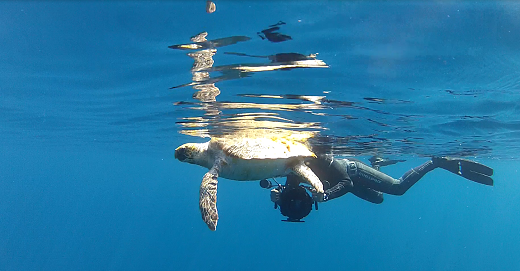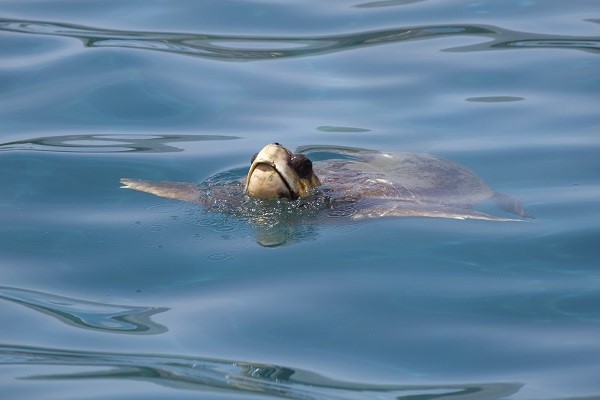How often, and how deep are they diving? These are key questions that we need to address to mitigate the risk of bycatch and ship strikes. A loggerhead turtle's diving patterns vary according to the age class of the turtle, the temperature of the water, prey availabillity and whether a turtle is in a neritic phase or an oceanic phase.
Satellite tracking of juvenile and sub adult loggerheads in the SW Mediterranean between 2002 and 2008 allowed us to inform the Spanish long lining fishery of a high bycatch risk on their fishing grounds between the months of May to September if hooks were soaked in the first 50 meters of the water column during daylight.
Satellite tags, Kinetic tags and National Geographic Crittercam, together with OASIS experiments of free ranging turtles, looking at behavioural response to different sounds and other stimuli, are currently being used to better understand loggerhead turtle basking and surfacing behaviour, and thereby identify potential technological measures to mitigate the risk of fast vessel strikes.







